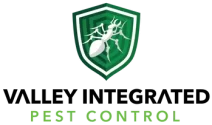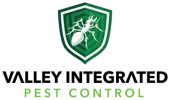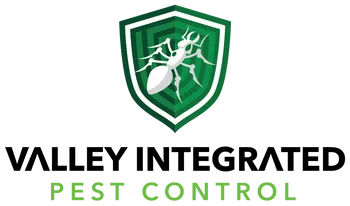Yes, professional pest control can be safe for pets and children, but safety doesn’t come from a bottle labeled “pet-friendly.” True safety is an active system you manage. It requires moving beyond simple product claims and embracing a comprehensive, three-part process: rigorous pre-treatment vetting of your chosen service, diligent home preparation before they arrive, and vigilant post-treatment monitoring to protect your family.
The Great “Is It Safe?” Fallacy: Why ‘Pet-Friendly Products’ Are Only One Piece of the Puzzle
As a pest control strategist, the most common question I hear is, “Is your service safe for my kids and pets?” It’s the right question to ask, but it often leads to a dangerously oversimplified answer. Many homeowners focus entirely on the product, seeking a magic “pet-safe” or “non-toxic” spray. While the choice of products is important, this product-centric view misses the bigger picture. A low-toxicity product applied incorrectly can be more dangerous than a stronger chemical applied with precision and care by a licensed professional.

The reality is that safety isn’t a passive feature of a chemical; it’s an active, collaborative process between you and your pest control team. This process ensures that the right methods are used correctly and that your home environment is properly secured before, during, and after treatment. This is the foundation of modern Integrated Pest Management (IPM), an approach that prioritizes long-term prevention and uses targeted treatments only when necessary.
Part 1: The Pre-Treatment Interrogation – Your First Line of Defense
Your power as a homeowner begins long before a technician arrives at your door. It starts with a thorough vetting process. Moving beyond “is it safe?” to asking specific, informed questions transforms you from a passive customer into an active partner in your family’s safety. Any reputable company will welcome this discussion and have immediate answers.
Key Questions to Ask Any Pest Control Service
When you call a potential service, have this checklist ready. Their ability to answer confidently is a strong indicator of their professionalism and commitment to safety.
- What are the specific active ingredients in the product you plan to use? A professional should be able to name the chemicals (e.g., Fipronil, Bifenthrin, Indoxacarb) and explain why they are being chosen for your specific pest problem.
- What is the application method? The risk of exposure changes dramatically between different methods. Is it a targeted gel bait pest control application, a contained childproof bait station for rodents, or a broad interior pest control spray?
- Can you provide me with the official Safety Data Sheet (SDS) for each chemical? This is non-negotiable. The SDS is a standardized document that details a product’s potential hazards, handling procedures, and emergency measures. If a company hesitates to provide this, it’s a major red flag.
- Are your technicians licensed and insured? Proper licensing ensures they have met state-mandated training standards on the safe application of pesticides. Insurance protects you in the unlikely event of an accident.
Deconstructing ‘Safe’: Understanding the Risk Hierarchy of Pest Control Solutions
Not all pest control methods carry the same level of risk. A key part of the professional pest control vs. DIY safety debate is an expert’s ability to select the lowest-risk method that will still be effective. Here’s how the options generally stack up, from lowest to highest potential for exposure:
- Exclusion & Mechanical Traps: Sealing cracks, fixing leaks, and using snap traps or pest control glue traps. These methods use no chemicals but require correct placement to be safe for toddlers and pets.
- Biological & Mineral Controls: This includes beneficial nematodes for garden pests or the use of Diatomaceous Earth. While generally considered low-toxicity, even natural products like diatomaceous earth safety for humans and pets depends on using food-grade versions and avoiding inhalation of the fine dust.
- Targeted Baits & Gels: These are highly effective for pests like ants and roaches. The pesticide is contained within the bait, minimizing the risk of airborne exposure. However, placement is everything. As experts note, when using bait stations for ants with pets or small children in the house, they should be placed out of reach, such as under the stove. Similarly, for rodent bait stations, the key to using bait traps safely in a pet-friendly household is placement; they must be put in areas where a pet’s paw cannot reach.
- Liquid & Granular Sprays: This is what most people picture when they think of “pest control.” An exterior pest control barrier can be very safe and effective, but interior spraying requires the most stringent safety precautions, including proper ventilation and strict re-entry times. Are pest control fumes harmful to toddlers? Yes, exposure during application and before the product has dried can be, which is why professional protocols are so important.
Part 2: The ‘Airtight Home’ Protocol – Your Role in Securing the Environment
Once you’ve chosen a qualified professional, the responsibility for safety shifts to you. Proper home preparation is not just a suggestion; it’s a critical step that prevents accidental exposure and ensures the treatment is as effective as possible.
How to Prepare for Pet-Safe Pest Control
Your pest control service should provide a detailed prep sheet, but a general protocol includes:
- Secure All Food and Water Sources: Pick up pet food and water bowls and store them away. Clear countertops of all food items. Knowing how to protect pet food during pest control is vital; place it in airtight containers or inside cupboards.
- Remove and Protect Pet Belongings: Collect all pet toys, bedding, and scratching posts. These items can be placed in a non-treated room (like a bathroom with the door closed) or removed from the house entirely during service.
- Address the Floor: The floor is a major exposure point for crawling babies and pets who clean their paws. Pick up all toys, rugs, and clutter from the areas to be treated. This allows for a more precise application and reduces the risk of pest control residue on floors contaminating personal items.
The Often-Overlooked Risks to Birds, Reptiles, and Fish
Mammals like dogs and cats are often the primary focus, but other pets face heightened risks. Birds are extremely sensitive to airborne chemicals due to their unique respiratory systems. Reptiles and amphibians absorb substances through their skin. Fish are highly vulnerable to even trace amounts of certain pesticides in their water.
This is why leading pet experts are unequivocal. As pet expert Amy Shojai advises, homeowners should ‘Remove pets from areas being treated, including fish and birds, and don’t allow them back until the product has dried,’ as pets can absorb toxins through their skin or paws. This may mean relocating them to a friend’s house for the day or securing them in a well-ventilated, untreated room with the door sealed at the bottom with a towel.
Part 3: Post-Treatment Vigilance – Knowing the Warning Signs and Safety Timelines
After the service is complete, your job isn’t done. Diligent monitoring is the final pillar of a truly safe pest control process.
Re-Entry Periods: How Long After Pest Control Is It Safe for Pets?
This is one of the most critical post-treatment safety instructions. The answer depends entirely on the product used and the application method. For most liquid spray treatments, the general rule is to wait until the product is completely dry. This can take anywhere from one to several hours. Proper ventilating of the house after pest control by opening windows can speed this up. Your technician must provide you with a specific re-entry period after the pesticide application. Do not allow children or pets back into treated areas until this time has passed.
The SLUD Acronym: Recognizing Subtle Signs of Pesticide Poisoning
Accidents are rare when proper procedures are followed, but it’s essential to know the warning signs of exposure. What happens if my pet licks pesticide? Symptoms can vary, but veterinarians use a helpful tool for identifying common signs of insecticide poisoning. According to experts, signs of insecticide poisoning in pets can be remembered with the acronym SLUD, which stands for salivation, lacrimation, urination, and defecation.
If you observe these symptoms—excessive drooling (Salivation), watery eyes (Lacrimation), involuntary urination (Urination), or diarrhea (Defecation)—along with others like vomiting, muscle tremors, or difficulty breathing, act immediately.
- Move your pet to an area with fresh air.
- Call your veterinarian or the ASPCA Animal Poison Control Center (888-426-4435) immediately.
- Have the name of the active ingredient (from the SDS sheet you requested) ready.
Professional Service vs. DIY: A Process-Centric Safety Comparison
Understanding the three-part system clarifies the safety gap between professional services and DIY attempts. The difference lies in a focus on the entire process, not just the product.
Product-Centric Safety (The DIY Approach)
The homeowner buys a product with a “pet-safe” label. The focus is solely on the chemical itself. This approach often fails because it neglects the other two critical parts of the safety system: rigorous preparation (Are all toys and bowls removed? Are fish tanks covered and sealed?) and post-treatment protocols (What is the true re-entry time? Do you know the signs of SLUD?).
Process-Centric Safety (The Professional IPM Approach)
A professional service operating on Integrated Pest Management (IPM) principles manages the entire safety process. As Angi notes, Integrated Pest Management (IPM) is a safer approach that focuses on pest prevention and only uses pesticides when necessary, reducing overall health risks. This process includes identifying the pest, selecting the least toxic effective treatment, providing a detailed prep plan, executing a precise application, and clearly defining post-treatment safety measures. This is why hiring a reputable pest control company significantly reduces the risk of improper chemical use and exposure.
Making the Right Choice for Your Needs
The “best” and “safest” approach depends on your specific situation, your tolerance for risk, and your willingness to be an active participant in the process.
For The Cautious Parent/Pet Owner:
You prioritize non-toxic options and are highly involved. Your best path is to find a certified green pest control service that specializes in IPM. You should lead the “Pre-Treatment Interrogation,” demanding SDS sheets and a clear explanation of all methods. Your diligence with the ‘Airtight Home’ protocol will be your greatest asset. Insist on starting with alternatives to chemical pesticides at home, like exclusion and targeted, low-toxicity baits, before escalating to sprays.
For The Desperate Homeowner:
You’re facing a severe infestation (like termites or bed bugs) and need an effective solution now. Your priority is to find a top-tier, licensed, and insured professional. Acknowledge that a more aggressive treatment might be necessary but demand a comprehensive safety plan. Your focus should be on rigorously following the preparation and re-entry protocols they provide. Ask them specifically about pest control chemicals and pregnancy risks if applicable, and ensure they can articulate a clear plan for protecting every family member.
For The DIY-First Homeowner:
You’re comfortable using store-bought products but may be unaware of the full scope of risk. Your key to safety is shifting from a product-centric to a process-centric mindset. Before your next application, read the *entire* product label, not just the marketing claims. Create your own ‘Airtight Home’ protocol. Understand the specific re-entry time for the product you’re using. If you feel uncertain at any step, recognize that the expertise of a professional is a small price to pay for your family’s health and peace of mind.
Ultimately, the safest pest control is a partnership. It combines the knowledge and precision of an experienced technician with the diligence of an informed homeowner. By working together and focusing on the entire safety process, you can effectively manage pests while confidently protecting the ones you love.
For a pest control plan that prioritizes the safety of your entire family, contact the expert team at Valley Integrated Pest Control. Serving Fresno, CA and the surrounding areas, we believe in a transparent, comprehensive approach to peace of mind. Call us today for a personalized assessment and a free quote.






